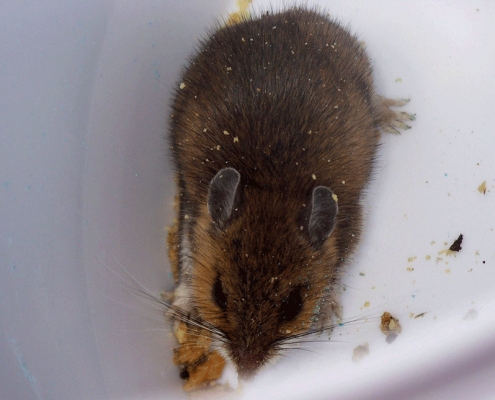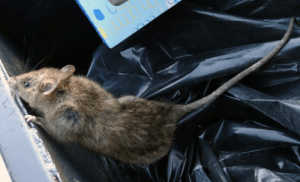 As scary as these creatures may be, mice play a vital role in the ecosystem. Generally speaking, house mice have always been directly associated with humans. Mice are thought to be the most widespread mammals in the entire world. More importantly, mice have been
As scary as these creatures may be, mice play a vital role in the ecosystem. Generally speaking, house mice have always been directly associated with humans. Mice are thought to be the most widespread mammals in the entire world. More importantly, mice have been
present since the Iron Age.
Apart from the fear of mice, these creatures are not well known. However, mice are facing a massive loss of habitat across the world. Energy development, cats hunting them around and urban development are just a few of the contributors to habitat loss. And that’s not all!
We still don’t fully understand these creatures. With that in mind, let’s take a look at some of the nitty-gritty details of the mouse.
Mice Solutions
Mice Identification
The mouse is known for having a long naked tail, short hair and protruding eyes. This mammal also has round erect ears, five toes in each foot, and a pointy snout. House mice usually come in a range of colors from black to light brown. However, the lower part of the mouse tends to be lighter than the rest of the body.
Some domestic strains of mice will have a white color with grey or black markings. More importantly, wild mouse species have a color range of dark brown to pale yellow.
Additionally, these wild creatures also feature long tails and large ears. Some rodent species have specialized hind legs designed for hopping such as the jumping mouse and kangaroo rat.
Typically, wild mice dwell in the grasslands and forests. Their range of habitat can extend from sea level to mountain highlands. However, other species prefer living in the suburbs and cities since there’s plenty of food. Such species include the house mouse, Norway rats and Roof rats. The Norway rat is often found in the cellars and basements since they are ground dwellers. On top of that, since Norway rats can swim well, they can survive in the sewers and other drainage areas.
On the other hand, the house mouse is sometimes considered to be a pet. Yes, you heard that right! Other people would prefer to pet mice rather than exterminate them from their homes. However, house mice will live near humans or even around the house. Unfortunately, these
mice typically need to be controlled since they can transmit diseases. What’s more, their droppings and urine can spoil food.
In most cases, the house mouse will build a nest out of shredded fabric and paper. This nest can be found behind woodpiles or even rafters. You can also find their nest in storage areas and nearby food sources. Wherever there’s a dark area in your home, then there’s a high chance of finding a nest of mice.
When it comes to black rats, they generally prefer to build their nests in the attic, overgrown shrubbery or even trees. On the other hand, Norway rats will build their nest in an underground area, for instance, in the sewers or basement of your home. But mice will prefer to nest where they can easily access water.
Mice are mammals, and they can have close to twelve litters a year. These mammals will breed continuously. A litter will consist of up to six young ones who are typically born without fur and are blind. Within ten days, the young ones will be fully furred, and they will start to wean at week three.
House mice will reach their sexual maturity level at five weeks while on the other hand, rats take up to four months. All the same, once you have two mice or rats in your home, they will increase in population in just a few months. These mammals are social creatures and will not live alone unless as a pet. They will create a complete social hierarchy in your home.
Wild mice are considered to be omnivorous. That means they eat anything. These mammals will eat a variety of insects, vegetables and meats without any hesitation.
However, most of the commercial rodents will eat human food as well as pet food or bird food. With that in mind, if you are a bird feeder, then you should be wary of these creatures. They will likely invade your garden and eat all the bird food available. They will also eat the food meant for your pets.
Typically, mice are nocturnal. That means that these little creatures will be inactive during the day. Additionally, mice are also good jumpers and climbers.
Contrary to popular belief, mice are exceptionally clean. These creatures clean themselves at least two times a day.
At first glance, rats and mice might appear to be the same species. They are both from the rodent family, they have a similar body structure, and seem to live similar lives. But there are significant differences between rats and mice that make each of them unique. It should be noted that the terms “rat” and “mouse” are not scientific classifications, but rather colloquial terms used to describe both species. Understanding the differences starts with what makes each rodent a rat or a mouse.
Rats
These are medium-sized members of the rodent family. They sport long, thin tails, triangular-shaped heads, and can be found around the world. Some of the most common are Norway rats, wood rats, black rats, and even naked mole rats. Keep in mind that these different species of rats may not be that closely related.
 Mice
Mice
Mice are small members of the rodent family that also sport long, thin tails. They are some of the most common and perhaps oldest mammals in the world. From deer mice to spiny mice to dormice, there are many different species that may or may not be that closely related.
Differences: The most significant difference is that rats and mice are not the same species despite their generally similar appearance. It is true that a small, young rat will bear a striking similarity to an adult mouse, that will change as the rat matures into adulthood.
Size: Rats are generally heavier, longer, and overall larger than mice. A typical rat grows to be nine to eleven inches long, not including the tail which can be up to nine inches as well. Plus, rats weigh on average from three-quarters to one and a half pounds or 350 to 650 grams. Mice are far smaller with body lengths that average three to four inches long, including tails that are about the same length. Plus, they weigh on average 30 to 90 grams which can be one-tenth of the weight of a typical rat.
Head: Another big difference is that the head of a rat tends to be heavy, feature a wide muzzle, and relatively tiny ears in relation to their heads. The head of a mouse tends to be small, narrower, and have a pointed muzzle.
Nipples: This is an obvious visual difference in that rats have six nipples while mice have only five.
Chromosomes: Rats, such as Norway rats have 22 chromosomes whereas common house mice have only 20. This may seem like a small difference, but it is quite large because it indicates they are a different species.
Burrowing: Rats are burrowing mammals while mice do not burrow. Instead, mice create nests near their food sources. Rats however will not only burrow, their strong teeth can chew through tough materials that include concrete and even aluminum. Although they are both rodents, rats and mice are considerably different in terms of their size, shape, and features even down to their chromosomes. The differences are important ones as they are two different species that happen to share a few common characteristics.
